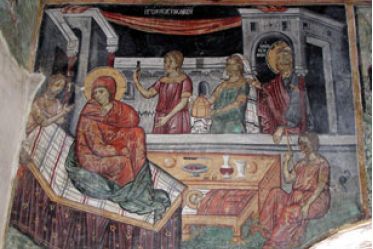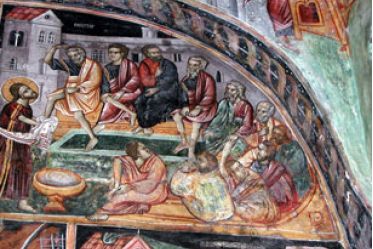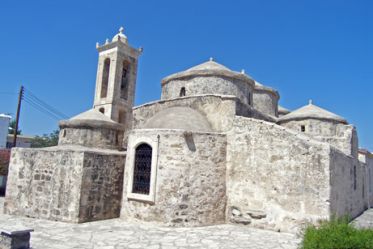![]() +357 24 828 100
+357 24 828 100
![]() +357 24 828 100
+357 24 828 100
The church of Agia Paraskevi is located in the village of Geroskipou, 3,5 kilometres east of Pafos. It is considered to be an extremely significant example of Byzantine architecture dated to the 9th century. It has not yet been established whether the church stands on the ruins of an ancient temple dedicated to the goddess Aphrodite. According to tradition, the name Geroskipou ( "sacred garden'") derives from the sacred gardens of the goddess, which were located to the south of the village towards the sea, at the point where the ancient pilgrims began their journey to the sanctuary of Palaipafos. It is quite possible that the church was originally dedicated to Timios Stavros. Nowadays however, it is dedicated to the Christian martyr Agia Paraskevi.
The church's architectural plan belongs to the type of the five-domed, three-aisled, barrel-vaulted basilica. The largest of the three domes is above the nave and the other two are above the centre of the aisles, to the north and south of the central dome of the nave. As far as the exterior of the church is concerned, it resembles the church of Agios Varnavas and Helarionas in Peristerona and to a lesser degree the churches of Apostle Varnavas near Salamina and Agios Lazaros in Larnaka.
A small domed tetraconch is affixed on the southeastern end of the church. The tetraconches were widely used during the Early Christian period, either as martyries or as baptisteries.
In the interior, the church of Agia Paraskevi is decorated with wall-paintings dated to various periods, from the 8th-9th, 10th, 12th up to the 15th century. During the course of cleaning and restoration work on the surviving frescoes by the Department of Antiquities in the period between 1974-1977, a monochrome reddish cross of an earlier type was revealed, painted directly on the stone, on the south wall of the north aisle. This type of cross is usually dated to the Early Christian period, up until the 8th-9th century.



